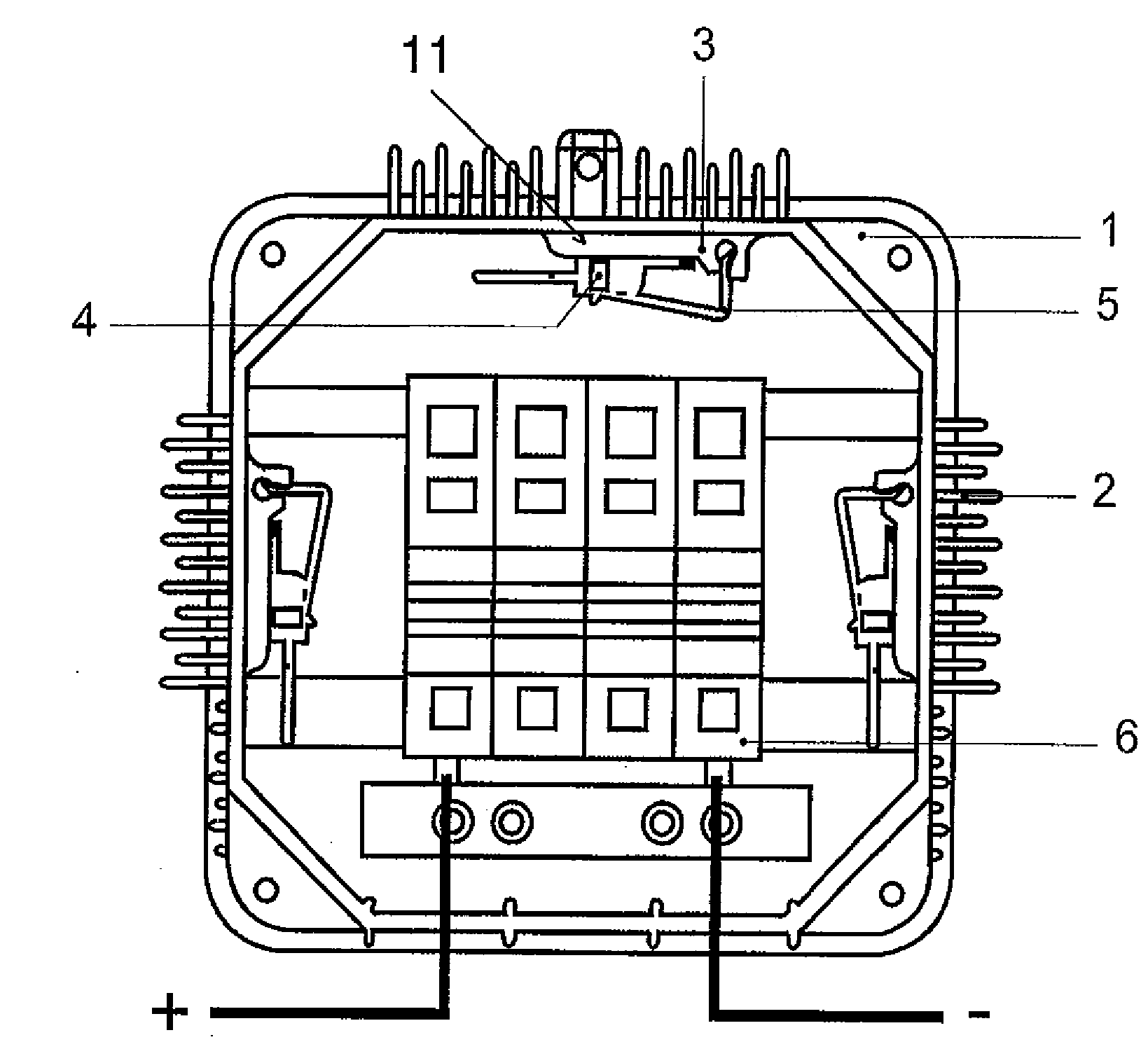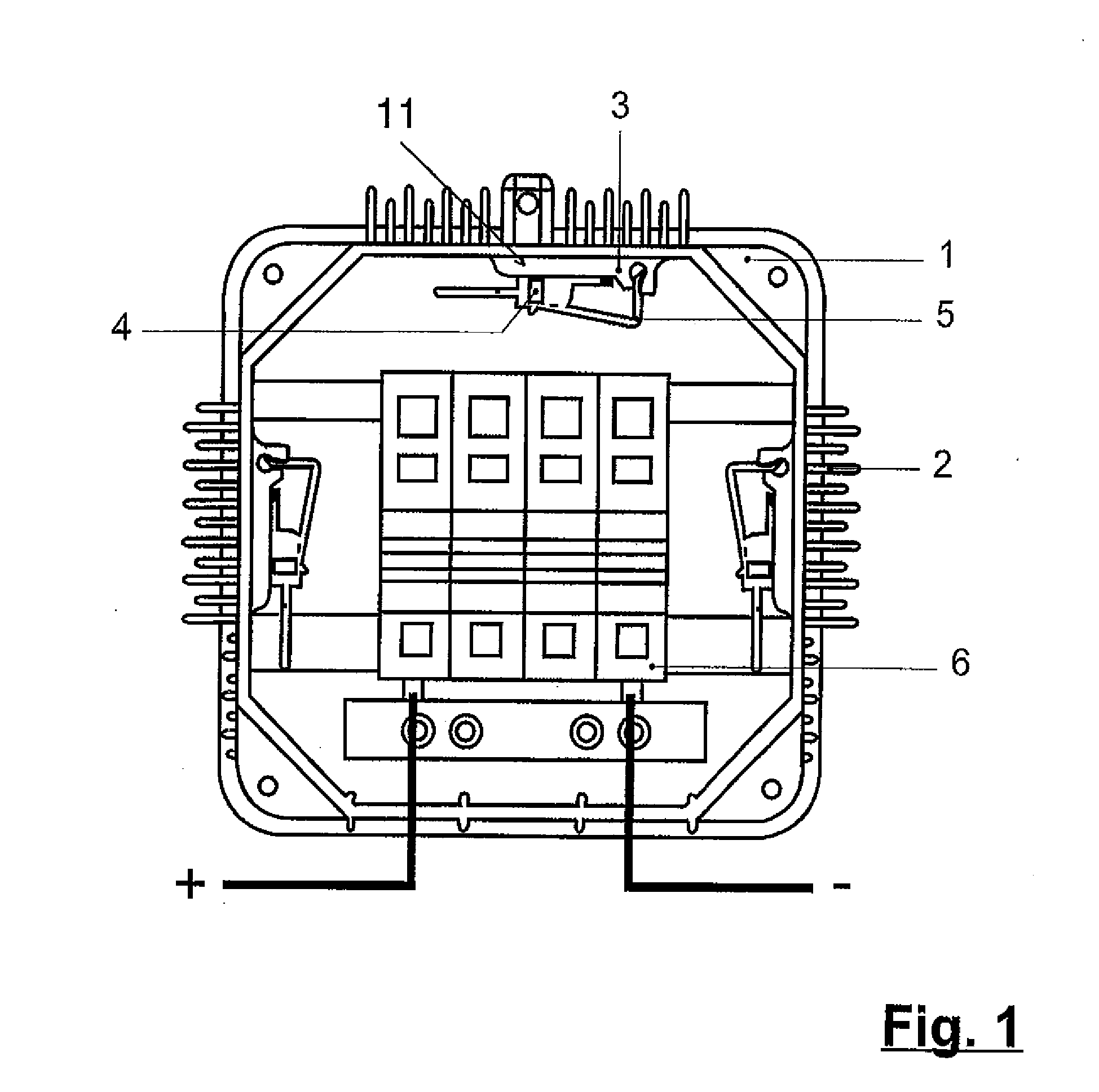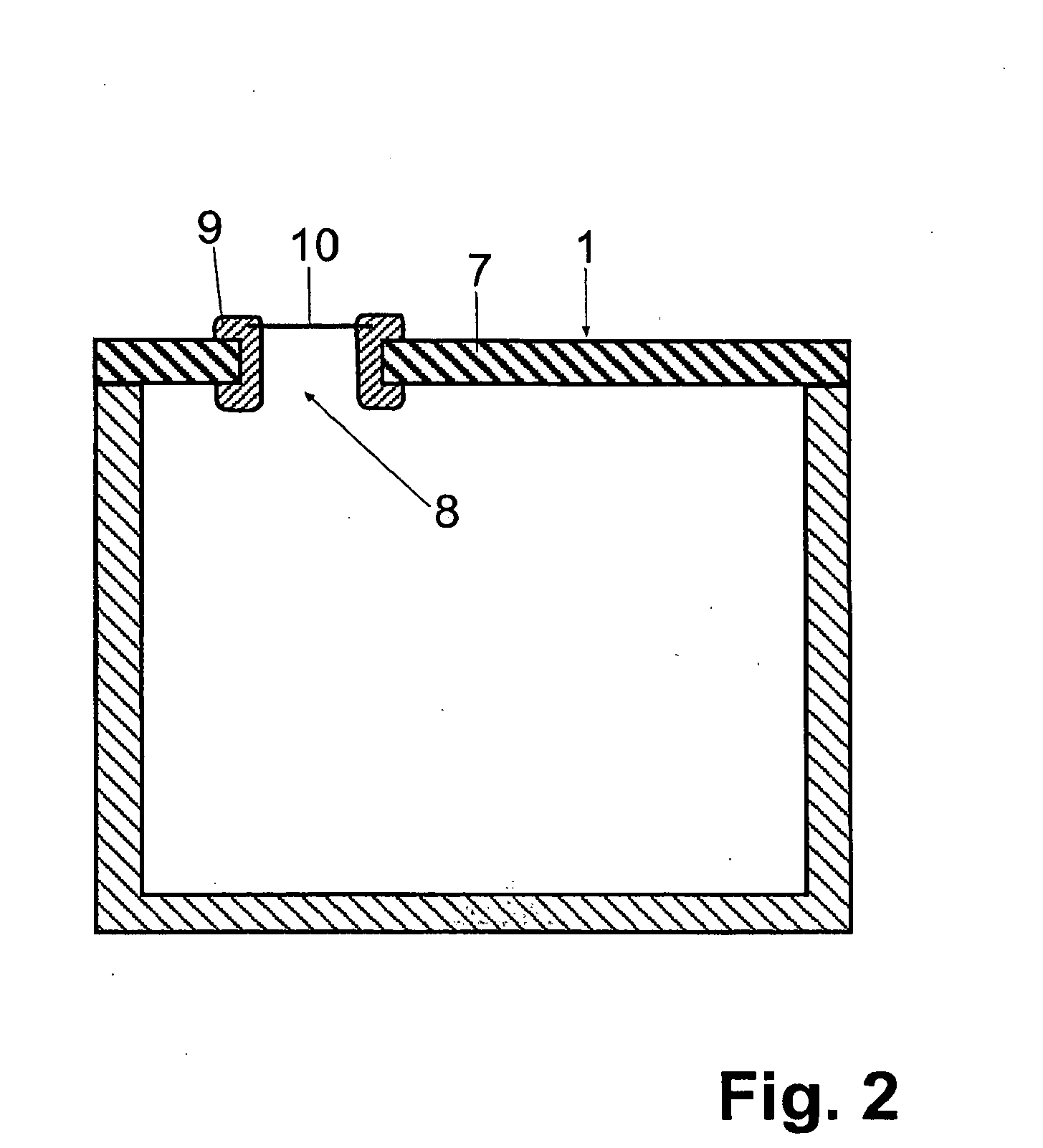Junction Box to Protect Individual Solar Panels from Overheating
- Summary
- Abstract
- Description
- Claims
- Application Information
AI Technical Summary
Benefits of technology
Problems solved by technology
Method used
Image
Examples
Embodiment Construction
[0022]The invention is explained in greater detail in the following by way of an embodiment; FIG. 1 here shows the junction box.
[0023]The junction box depicted in FIG. 1 comprises a metal housing 1, with cooling fins 2 formed on its outside walls. An electronic component, such as a Schottky diode 4, a MOSFET, a power semiconductor, etc., is pressed with the aid of a pressure element 5 into a groove or retainer 3 that is provided on the inner wall of the housing 1. A terminal block 6 is also shown. In the embodiment shown, three retainers 3 are provided and an electronic components 4 is snapped into each of the retainers 3 and held therein by means of the pressure element 5, which is a spring clip 5.
[0024]A thermally conductive, but electrically insulating layer 11, constructed as thermally conductive silicone rubber, is provided between the diode 4 and the housing 1. The insulating layer 11 is hidden from view by a wall of the retainer 3. This arrangement protects the diodes 4 again...
PUM
 Login to View More
Login to View More Abstract
Description
Claims
Application Information
 Login to View More
Login to View More - R&D
- Intellectual Property
- Life Sciences
- Materials
- Tech Scout
- Unparalleled Data Quality
- Higher Quality Content
- 60% Fewer Hallucinations
Browse by: Latest US Patents, China's latest patents, Technical Efficacy Thesaurus, Application Domain, Technology Topic, Popular Technical Reports.
© 2025 PatSnap. All rights reserved.Legal|Privacy policy|Modern Slavery Act Transparency Statement|Sitemap|About US| Contact US: help@patsnap.com



